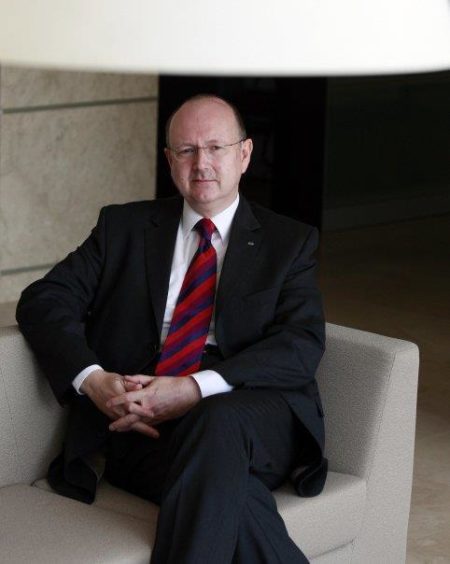More than £40 million has been spent on supply teachers across Tayside and Fife in the last six years.
Figures provided in response to freedom of information (FOI) requests show that since April 2015 the cost of supply teachers to local authorities in Courier Country has been £40.2 million.
Fife Council was the most prolific spender, with the figures showing it spent more than £17 million.
By comparison, Angus Council spent just sixth of this amount in the same period.
The Fife region has more schools than those in Tayside, with their being three and a half times as many compared to the Dundee City region.
The figures provided in the FOI responses were given for spending during the financial year rather than an academic year.
Dundee
They show that since 2015, Dundee City Council has spent more than £7 million on supply teachers.
On average, the cost to the local authority was approximately £1.1 million each financial year.
The period between April 2016 and March 2017 saw the highest spend, with £1,450,182 being shelled out.
However, in the the current financial year up to December, DCC has spent £410, 543 – an average of just over £45,000 each month.
If this were to continue at the current rate, the total spend for this year would be just over £500,000.
Figures obtained from DCC last year showed that the number of full time equivalent (FTE) teachers employed by the local authority has fallen each year since 2016.
A high of 1,479 FTE teachers were employed by DCC in 2016. This fell to 1,443 in 2019 – a fall 0f two percent.
There are 33 primary and eight secondary schools in the Dundee city region, with more than 18,000 pupils on the school roll in total.
A Dundee City Council spokesman said: “The children and families service closely monitors teacher numbers in all the city’s schools and takes prompt action to fill vacant posts.
“Supply teachers have been used consistently over the years as part of this process.”
Angus
Angus Council has spent the least on supply teachers in Tayside since 2015, a little over £2,530,000.
There are 51 primary schools and eight secondary schools in Angus.
Unlike the other local authorities in Tayside and Fife, Angus Council has not spent over £1 million on supply teachers in a single financial year.
The most spent in a single year came in 2018-19, where £648,850 was shelled out.
This was an increase of more than £270,000 compared to the 2015-16 financial year, when just over £375,000 was spent by the local authority.
In the current financial year, £386,000 has been spent to date. The average amount spent by the local authority spent in each year between 2015 and 2020 was £503,860.
An Angus Council spokesman said: “Supply staff may be used for a range of reasons, including filling vacancies on a temporary basis, providing cover for staff absence and providing cover for staff to undertake SQA duties or professional development.”
Perth and Kinross
Since 2015, Perth and Kinross Council has spent more than £16.1 million on supply teachers.
This is more than twice the amount spent by Dundee City Council in the same period, and more than six times the amount spent by Angus Council.
The Perth and Kinross region has 70 primary schools and 11 secondary schools.
On average, Perth and Kinross Council has spent around £2.6 million each financial year.
In the current financial year, it has spent £2,356,839 to date.
Short-term supply work is classed as work of two days or fewer but our costs include all teachers who have provided cover, both in the short and long-term.”
Perth and Kinross Council spokesman
A Perth & Kinross Council spokesman said: “Perth & Kinross Council is committed to providing a high-quality education for all of our pupils and young people.
“Education and Children’s Services closely monitor teacher numbers in our schools and take prompt action to fill vacancies when they arise.
“Supply teachers have been used consistently over the years as part of this process and as well as vacancies they provide cover for when teachers are ill, on training, parental leave or any other required absence.
“Short-term supply work is classed as work of two days or fewer but our costs include all teachers who have provided cover, both in the short and long-term.
“Other Local Authorities may not record their costs in the same way.”
Fife
Fife Council has spent £17.8 million on supply teachers since 2015.
No figures were provided for the spending to date in the current financial year, however the local authority has spent an average of £3.5 million each year.
The 2018-19 financial year was the costliest for Fife Council, with the local authority spending £3,833,555 on supply teachers in this period.
The Fife region has the most out of the four council areas, with 133 primary schools and 11 secondary schools.
The total pupil roll across the region is 17,953.
Shelagh McLean, head of Education and Children’s Services at the council, confirmed that the council uses supply teachers to cover for absences of all kinds in Fife’s schools.
She said: “This is a regular investment in the running of our schools and equates to around 70 full time posts across over 170 educational establishments.”
“Hindrance to their education”
Reacting to the figures, Scottish Conservative north-east MSP Bill Bowman took aim at the Scottish Government’s efforts to recruit new teachers.
He said: “Local authorities are being forced to plug the gaps caused by the SNP’s inability to recruit and retain more teachers.
“These figures are an illustration of the current recruitment and retention crisis facing our education sector under the Scottish Government’s watch.
“The lack of a permanent teacher over a prolonged period can be a hindrance to their education.
“But coming in as a supply teacher is also difficult and they deserve praise for helping to fill these empty spaces in schools.
“In order to make teaching an attractive career option in areas such as Perth and Dundee, issues of severe workload and declining pay must be addressed by the SNP Government.
“It’s a credit to the efforts of Angus Council for managing to buck the trend across Scotland.”
A Scottish Government spokeswoman said: “The number of full time equivalent teachers is at its highest since 2008.
“Since the start of the pandemic our additional funding has led to 1,400 teachers and over 200 support staff being appointed.
“We recently allocated an additional £45 million to councils to support schools and families.
“That funding, which is sufficient to fund 2,000 additional teachers, can be used to recruit additional staff. Recruitment and deployment of teaching staff are for councils to determine based on local needs.
“The current teachers’ pay deal delivered a 13% rise over three years, while we are creating new opportunities for teachers to develop their careers or for people to enter the profession.”











